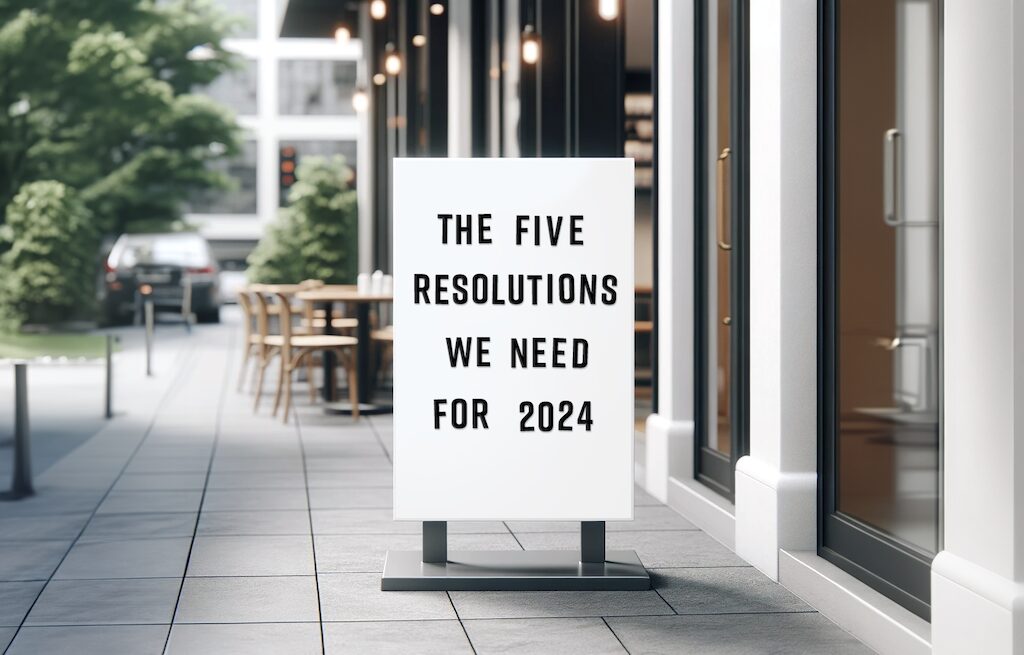9 Mins Read
As marketing experts, we know that consumers are not as rational as academic research leads us to believe. In 2024, it’s time to get unstuck and rethink our priorities.
Editor’s Note: This article is a collaboration with Unstuck, a thought piece platform bringing the missing consumer mindset and skillset needed to take sustainable foods mainstream; all views are the authors’ own.
For the past decade, the alt protein industry has been focused on the holy trinity of price, taste, and convenience. While we’ve made huge progress on all three, there simply aren’t enough consumers showing up to the party. Many of our propositions will continue to fail unless we change our thinking. We’re calling for 2024 to be the year we shift our mindset and skillset to get us unstuck.
On the face of it, price, taste, and convenience (collectively known as PTC) seem like sensible drivers of choice in food. Who wouldn’t want cheap, tasty, and easy? But research published last year by think tank Rethink Priorities shows they’re not nearly enough to explain actual behavior. As marketing and branding experts we have been trained to know real people are not nearly as rational as academics or structured research questionnaires will lead us to believe.
Why price, taste & convenience are not enough
Think about it for a moment. Bottled water is a $300 billion category globally despite being indistinguishable in blind taste tests, potentially worse for your health, and sold at a 10,000% price premium to tap water. Aligning alt protein pricing with conventional animal products will not bring a flood of consumers knocking on our doors. Demonstrating value and justifying a fair premium will.
Let’s look at ramen next, a $50 billion category globally. It has graduated from dorm rooms into kitchens and Michelin-starred restaurants not by imitating established tastes, but by introducing new ones with a few lucky cultural moments along the way. Attempting to imitate the taste of animal protein, down to the blood dripping out of our undercooked burgers, doesn’t help especially when it adds scary-sounding compounds to the ingredients list. We have to create an aspirational taste and cultural context of our own.
Finally, the fastest growing segment in pet food – raw, fresh, and frozen – has reached $18 billion in the US alone despite being harder to find and a pain in the ass to serve compared to a bag of dried kibbles. Yes, we need to know where to get and how to use alt-protein. But food is also an act of love, and we will put in the effort when we really care.
It’s not (just) you, it’s the ecosystem
While some self-flagellation within alt protein is necessary – especially around the lack of marketing skills, the us vs. them mentality, and the echo chamber we operate within – the reason we’re stuck has a lot to do with the larger food ecosystem.
In developed markets, and increasingly globally, a small handful of companies control the vast majority of products that go into our shopping baskets. However, they lack the incentives to disrupt their own categories.
Yes research labs are experimenting with novel ingredients and well-intentioned incubator teams are conducting market tests. But when the time comes for country managers in charge to allocate their budgets, they will always bet them on the proven formulas that are sure to deliver their profit targets and company bonuses. Alt-proteins remain curiosities relegated to page 40 of the sustainability report at best or are quietly “deprioritized” at worst.
Perhaps even more important, and certainly much more ignored, are food retailers and foodservice operators who have the potential to be market makers. Yet they are largely sitting on the sidelines because nobody is bringing them a compelling category vision in terms they understand and can act on.
The good news? Both food retailers and leading manufacturers we’ve spoken to have a genuine appetite for change. But we can’t rely on them to work out the answers that will give them the confidence to shift their portfolios by themselves. To get us unstuck we need to embrace a consumer-centric mindset and skillset that will get the ecosystem moving. Here’s how.

The five resolutions we need for 2024
- Stop thinking product, start thinking category
Here’s a harsh truth – the consumer doesn’t care about us. We like to think we build our market by taking people along a funnel from when they are first aware of us to when they become our loyalists, forever a converted advocate.
The reality is that when a consumer walks into an average supermarket they’re faced with more than 30,000 items to choose from. People don’t think in products, they think in categories. They want to pick up some chicken for dinner, put a healthy snack in their kids’ lunchbox, or grab milk for their latte. It’s little wonder most shopping is done on auto-pilot. People’s brains don’t want to process endless new options, so they come back to what they grew up with – the meals they know they like.
Think this doesn’t sound like you? Remember you are not your consumer. Get used to the idea that you spend disproportionately more time thinking about what you’re eating and studying where your food comes from than pretty much everyone else on the planet.
Resolution #1: Deeply understand not just your product or ingredient but the category context it exists within. Use these needs, beliefs, and habits to get people’s attention and serve them better.
- Stop thinking rational, start thinking emotional
Thinking rationally takes time and energy. We make over 200 decisions just about food every single day. Because we don’t have the capacity to think deeply about these decisions, it’s far easier for us to make quick responses to emotional cues.
Advertisers trying to influence these decisions bombard us with thousands of messages every day. From the phone you check as soon as you wake up, to the podcasts that put you to sleep, it doesn’t stop. That’s why great advertising doesn’t make you think, it makes you feel. It’s why the infamous Got Milk? campaign worked, tapping into relatable moments such as running out of milk at breakfast time. Our brains call upon these emotional responses to make quick, intuitive decisions.
However, the way the alt protein industry has tried to understand the consumer is fundamentally flawed because it engages them on a rational level, not a true-to-life, intuitive, and emotional one. Various studies keep telling us that around 90% of consumers say they would buy more sustainable proteins once they’re the same price, taste, and nutrition as the meat they buy today. Does that mean they actually will? Sadly not.
Resolution #2: Stop spending time and money asking people rational questions that just confirm pre-conceived notions but don’t relate to actual behaviors. Uncover a deeper understanding of your consumers and test their emotional responses, so you’ll know whether the positioning of your product is going to resonate or fall on deaf ears.
- Stop thinking niche, start thinking mass
Impossible Foods CEO Peter McGuinness beat us to this one in his Adweek X conference interview at the end of last year. By talking to the niche – the small percentage of consumers who do pay attention, do think rationally, and deeply care – you risk “pissing off” the masses. Americans eat on average 347g of meat per day. That’s the market for alternative meat proteins right there. If you categorise your market based on attitudes to climate change, animal agriculture, or worse ‘food technology’, you define a much smaller market and an artificial one at that. Remember what consumers told you in a survey is not true to real life.
Marketers today are trained to ‘target the market’, not market to a target. That’s because brands and products grow through having lots of customers, not a small number of highly loyal ones. Half of all Coca-Cola buyers buy the brand just one or two times a year. There will always be people whom our products aren’t relevant for, strong traditionalists, or those who simply cannot afford them. But largely you’ll find a huge market for the taking, almost half of Americans identify as ‘flexitarians’.
Resolution #3: Get the right marketing and consumer leadership in place to think big, just as you do with your science and technology roadmaps. To get to a wider audience you need deep consumer expertise that’s not easy to develop, but neither is cracking how to grow meat from animal cells, or making dairy without cows.
Note: Please don’t think this doesn’t apply to you if you’re a “B2B player”. If you don’t lead and support your customers in this work, you can’t expect them to figure it out for themselves, and won’t ever get beyond working in the incubator lab with them.
- Stop thinking parity, start thinking difference
Differentiation is something a good business person will spend a lot of their time thinking about. Identifying a meaningful attribute their proposition can stand behind and become known for. Take cars – they all get you from A to B – but some are famous for safety, others for speed, others for style.
The problem with parity is it provides no compelling reason for consumers to switch. If our only difference is climate or animal friendliness we’re toast. These aren’t meaningful to a mass audience (despite what your rational research claims), so why would they change the habits of a lifetime? We either wait for consumers to become enlightened while the clock is ticking, or we find relevant points of differentiation in the category to stand behind today. Health benefits for up to 90% of South Asians who suffer a form of lactose intolerance or 86 million Americans who have borderline high or high cholesterol levels), and experiential benefits (taste, mouthfeel, hunger satiation) all have huge potential within alt-proteins.
You may be thinking, but what about Oatly, don’t they talk about being cow-free and sustainable all the time? Oatly began as a proposition for those with a milk protein allergy. The success in building brand awareness then came from aligning with coffee shops and baristas, providing a differentiated coffee experience in a distinctively branded way that made choosing Oatly a contemporary choice. The brand earned the right to then build upon a deeper purpose which is a lot of what we hear from Oatly today.
Resolution #4: Zero in on a meaningful difference you bring to the world. Do it by spending time with consumers to immerse yourself in their world. If you don’t have the budget for ethnographic studies – find some friends of friends who’ll invite you into their kitchen and talk freely. Go through their fridge – what have they bought and why? What are they looking for when they buy meat or dairy? What are the things you could make even better, and what are the things they don’t want you could remove?
- Stop thinking commodity, start thinking value-adding
Chasing price parity builds a commoditised industry. Having a broadly accessible alt-protein category may be the ultimate aim to drive switching from animal to non-animal products, but it’s not how categories are created. Industries now regarded as commodities started as premium propositions, and they retain branded propositions within them to this day. The cream cheese category was largely built by the Philadelphia brand. Pints of ice cream didn’t exist until Haagen Dazs and Ben and Jerry’s exploded onto the scene, growing the category far beyond what bland flavors in big tubs were able to do.
Building demand requires creating consumer value. A collection of poorly branded, generic frozen “not-chicken” nuggets will not create a category, no matter how cheap they are. Once desire is established and products become a part of weekly shop and restaurant orders, then we’re ready for mass-pricing, private-label, commodity products. Just like the industries that have been created before us.
Resolution #5: Having a path to price parity is important, but building category value now is even more so. Find the day-to-day consumer problems where you can bring value and use them to disrupt your category.
The willpower to get unstuck
Ever since the Roman times January, named after Janus the god of beginnings and transitions, has given us a chance for a fresh start. We make many resolutions for the occasion, but the ones that last follow a simple formula.
Break down the challenge into smaller steps, like the five shifts we’ve described. Tell others that you are putting the consumer at the center of your thinking. Remind yourself of the benefits regularly. Reward your teams as you put thinking into practice. And track progress toward your milestones regularly.
For our part, we will be continuing to beat the drum on ways to get us unstuck. We hope you will join the debate because we can’t let this new year’s resolution fail.




